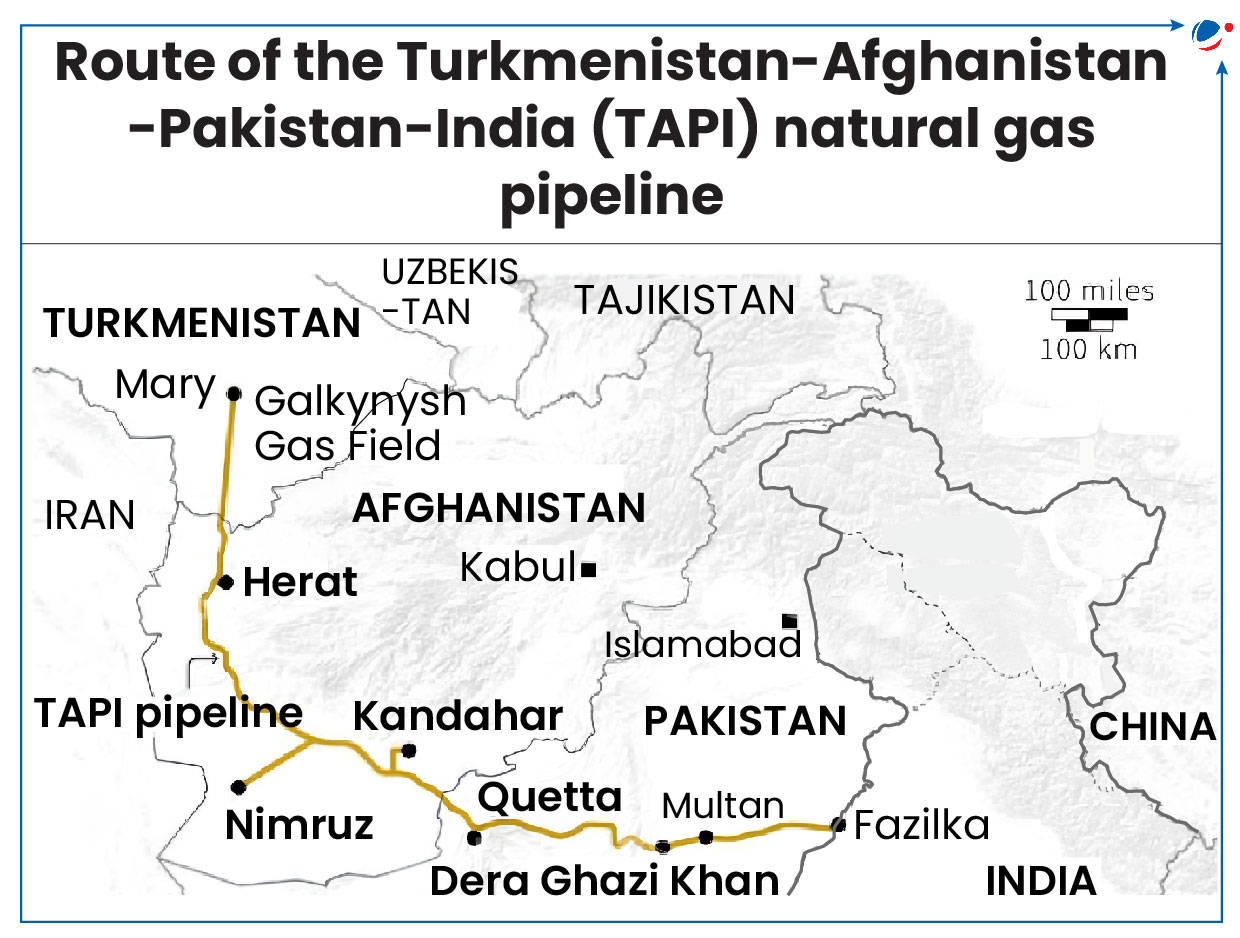Why in the News?
Recently, Afghanistan and Turkmenistan officials jointly inaugurated Turkmenistan-Afghanistan-Pakistan-India (TAPI) gas pipeline project on Turkmenistan side and Afghanistan said to begin work on TAPI pipeline.
About TAPI Project

- TAPI Pipeline, emerged in mid-1990s, is designed to transport natural gas extracted from the Galkynysh gas field in southeastern Turkmenistan.
- The Galkynysh gas field (previously called Ýolöten Gas Field) was discovered in 2006 and is located 75 km southeast of Mary, Turkmenistan.
- It is one of the world's five largest gas fields with estimated reserves of 4 to 14 trillion cubic meters and proven commercial reserves of 2.8 trillion cubic meters.
- The field also holds around 300 million tons of oil.
- It spans approximately 1,800 kms from Turkmenistan to Afghanistan, Pakistan, and India.
- It is expected to transport approximately 33 billion cubic meters of natural gas annually.
- Asian Development Bank (ADB), acting as the transaction adviser, is financing the project.
Significance of the TAPI Project
- Strategic and Geopolitical: Economic interdependence may pave the way for improved relations between India and Pakistan.
- It can also help India counter China's growing influence in Central Asia.
- Economic: Access to potentially cheaper natural gas could boost India's industrial sector, may reduce India's trade deficit by lowering energy import costs, etc.
- Energy Security: TAPI could provide a stable, long-term source of natural gas, helping to diversify India's energy mix and reduce dependence on oil imports.

Conclusion
TAPI has the potential to transform the energy landscape of South and Central Asia, fostering greater regional integration and economic development. However, the project's long history of delays and setbacks underscores the need for realistic expectations and flexible and adaptive strategies for implementation.






